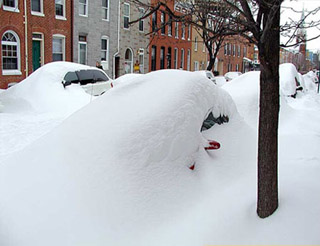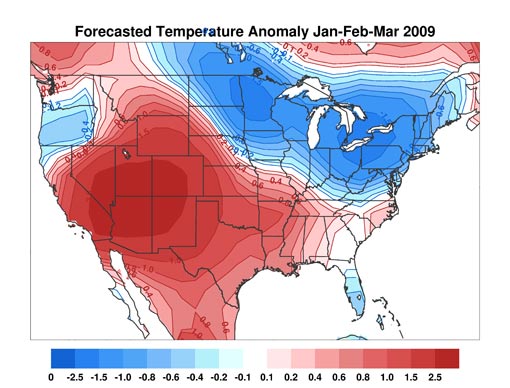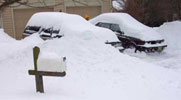
|
Researchers at AER and MIT are taking winter weather forecasting beyond El Nino by investigating the relationship between Siberian snow cover in fall months, and Northern Hemisphere climate variability during the winter. A forecast model developed by AER scientist Judah Cohen has consistently achieved on-target forecasts for most major cities in the industrialized countries.
“Weather impacts peoples' lives and the global economy on a daily basis,” says Steve Reid, program director in NSF’s climate dynamics program. “Improving our ability to predict severe events such as the cold weather in the eastern U.S. this past winter, and the heavy snow during the prior winter, has obvious benefits. The success of Cohen’s real-time forecasts offers a way to improve our ability to anticipate important climate events.”

Predicted winter surface temperature anomalies for the United States Jan-Feb-Mar 2009 in degrees Fahrenheit. The model is forecasting warm for the Western US and the Southern Plains and much of the Southeast with cold for the Upper Midwest, the Great Lakes, the Northeast and Florida. The model uses October Siberian snow cover, sea level pressure anomalies, North Pacific sea surface temperature anomalies and recent temperature trends in its 2009 winter forecast. October 2008 snow cover was observed to be below normal, which favors above normal temperatures for the Eastern US. However, other model predictors favor colder than normal temperatures in the Northern and Eastern US. Credit: Judah Cohen, AER Inc. |

